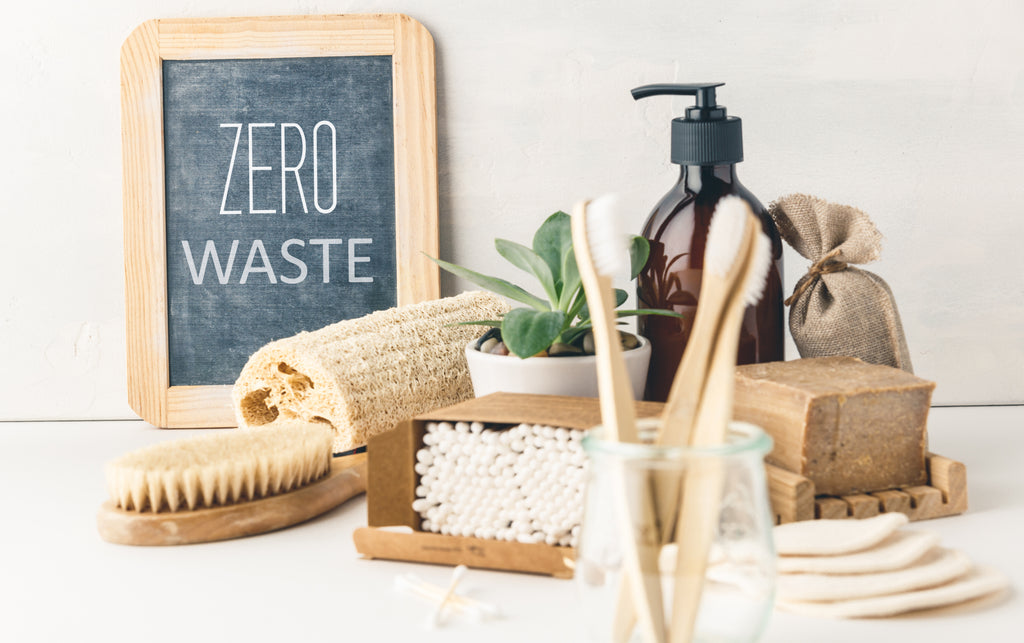Conserving Water Through Design: Sustainable Solutions for Your Bathroom

Every year, on March 22nd, the world comes together to recognize and reflect on one of our most precious resources — water. World Water Day is a global initiative aimed at raising awareness about the importance of freshwater and advocating for sustainable management of water resources. In light of the significance of this day, we're excited to share some invaluable bathroom tips aimed at helping you reduce water usage and safeguard this life-giving resource for generations to come. So, let's dive in and discover how we can make a splash in conserving water together!
Why Sustainable Bathroom Design Matters
Did you know that each person goes through about 88 gallons of water per day at home — and that our bathroom habits account for the vast majority of that? Or that 10% of households waste a staggering 90 gallons or more a day because of leaks? Excuse the pun, but that’s a whole lot of water (and money) going down the drain.
The good news? With just a few sustainable swaps, you can significantly slash your water usage—and the best part? It's easier than you might think.
3 Eco-Friendly Solutions for Sustainable Bathroom Design
Imagine stepping into a bathroom that's not just stylish, but also a champion of sustainability. That's the magic of modern fixtures like low-flow toilets and water-saving faucets. Although they may resemble their water-wasting counterparts, these sustainable fixtures seamlessly blend cutting-edge technology with contemporary elegance — so you can save water without compromising on style.
Low-Flow Toilets
While water conservation likely isn’t the first thought that enters your mind when it comes to picking out a new toilet, it absolutely should be. Why? Well, older toilets can use between 3.5 to 7 gallons of water per flush. When compared to high-efficiency models, which use as little as 1.28 gallons (per flush), it’s easy to see how the average family can save up to 13,000 gallons of water per year, just by making the switch. In addition to being better for the environment, low-flow toilets can also significantly slash your utility bill — making it a win-win for your monthly budget and our planet.
Water-Saving Shower Heads and Faucets
Showers consume a good chunk of our indoor water at home too — accounting for nearly 17% of the total usage. Thankfully, by swapping your existing showerhead for a low-flow option, you can reduce your water usage by up to 40%. Yes, really. With a swap this simple (quick and affordable), it’s a great first step towards a more sustainable bathroom.
Before we delve into water-saving faucets, it's important to highlight a straightforward yet often overlooked tip: don't let the water run unnecessarily. Whether you're brushing your teeth or washing your face, every drop counts. So do the planet a favor and turn it off between uses. Now, onto the sustainable swap. Replacing your existing faucet with a water-saving option can reduce water flow by 30% or more — decreasing your waste without altering your habits (although we firmly stand by the “never let the water run” lyrics in this popular Barney song).
Not sure where to start when it comes to shopping sustainably? Here's a handy hint: When you're shopping for your next faucet or showerhead, keep an eye out for the WaterSense label. This tiny label signifies that the product you are choosing meets strict standards, ensuring the product's functionality while also saving a significant amount of water. And since WaterSense products measure how much water you’re saving, your family will be able to see the effects of your sustainable swaps in real time!
Greywater Recycling Systems
Ever wondered what happens to the water that swirls down your sink or shower drain? Well, it turns out, it all ends up in the sewer system, which isn’t exactly good for the planet. That’s where greywater recycling systems come into play. Greywater recycling systems can reduce your household water usage by up to 50%! How? Well, it’s actually quite simple. Instead of sending relatively clean water (from sinks, showers, baths, and washing machines) into the sewer system, greywater recycling systems, collect, filter, and repurpose it for things like watering plants or flushing toilets.
While this option does have a heftier price tag than the ones above, it uses significantly less fresh water, eases the pressure on city water systems, and reduces the wastewater that goes back into nature — making it a worthwhile investment for environmentally-conscious homeowners.
Going Green for a Brighter Tomorrow
Embracing eco-friendly bathroom designs isn't just about trends — it's about taking care of our planet. With water-saving fixtures like low-flow toilets, water-saving faucets, and greywater recycling systems, you can significantly reduce water wastage in your home without comprising on style. So, on this World Water Day, let's join together in a pledge to conserve more water by making a simple change in our bathrooms. Together, we can make a big difference!

 Canada
Canada